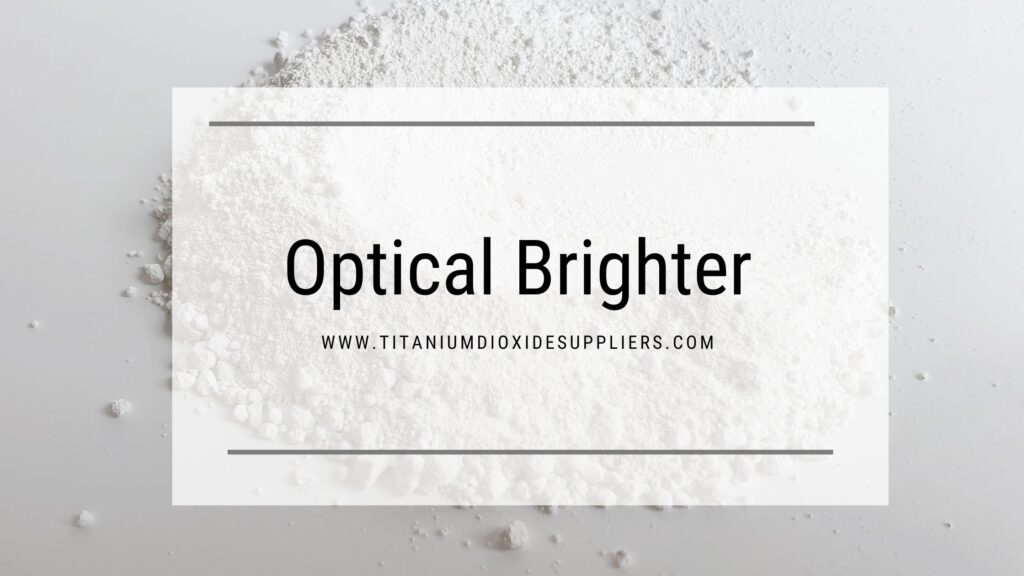In the world of chemical additives, optical brighteners (also known as fluorescent whitening agents or FWAs) play a vital role in enhancing the appearance of products. From detergents and textiles to plastics and paper, these compounds are everywhere — yet most people don’t even realize they’re using them daily.
In this blog, we’ll dive into what optical brighteners are, how they work, and where they are commonly used across industries.
What Are Optical Brighteners?
Optical brighteners are chemical compounds that absorb ultraviolet (UV) light and re-emit it as visible blue light. This fluorescence reduces the yellowish or dull tones in materials, making them appear brighter, whiter, and cleaner to the human eye.
They don’t remove stains or whiten substances chemically — instead, they create an optical illusion of whiteness and brightness.
Common Chemical Types of Optical Brighteners:
- Stilbene derivatives (most common)
- Coumarins
- Benzoxazoles
- Naphthalimides
How Do Optical Brighteners Work?
The science behind optical brighteners is based on fluorescence. Here’s how they function:
- Absorption of UV Light: Optical brighteners absorb invisible UV radiation (usually between 340–370 nm).
- Emission of Visible Blue Light: They re-emit this energy as visible blue-violet light (typically around 420–470 nm).
- Visual Whiteness Effect: This blue light neutralizes yellowish tones on a surface, giving the illusion of enhanced brightness and whiteness.
This process tricks the eye into seeing cleaner, brighter, and newer surfaces, even if the actual base material hasn’t changed.
Where Are Optical Brighteners Used?
Optical brighteners are highly versatile and widely used in both consumer and industrial products. Here are some of the most common applications:
1. Textile Industry
- Application: Whitening of cotton, polyester, and blended fabrics.
- Purpose: To give fabrics a bright, clean appearance and mask any natural yellowness.
- Method: Added during fiber production or fabric finishing processes.
2. Detergent Industry
- Application: Laundry detergents and fabric softeners.
- Purpose: To make washed clothes look “brighter than white” by depositing brighteners onto fabric fibers.
- Note: Most household laundry powders and liquids contain optical brighteners.
3. Paper Industry
- Application: Office paper, packaging, tissue paper, and printing materials.
- Purpose: Enhances whiteness and print contrast.
- Technique: Brighteners are added during pulp treatment or surface coating.
4. Plastics and Polymers
- Application: Brightening of ABS, PVC, polystyrene, acrylic, and polyethylene.
- Purpose: To enhance aesthetic appeal and compensate for yellowing caused by UV exposure or aging.
- Industries: Used in automotive plastics, cosmetic containers, films, and packaging materials.
5. Cosmetics and Personal Care
- Application: Skin creams, lotions, foundations, and toothpaste.
- Purpose: Optical brighteners in cosmetics reflect light to reduce dullness and give the skin a luminous appearance.
6. Paints and Coatings
- Application: Decorative and industrial paints.
- Purpose: Improves the brightness and coverage of coatings, especially on aged or yellowed surfaces.
Benefits of Using Optical Brighteners
- Improves perceived whiteness and brightness
- Cost-effective alternative to bleaching
- Enhances aesthetic appeal in consumer goods
- Increases contrast and visibility in printed materials
- Compensates for yellowing due to age or UV damage
Considerations When Using Optical Brighteners
While highly useful, optical brighteners must be selected and applied with care:
- Compatibility with substrate materials (e.g., fiber, polymer, pulp)
- Photo stability – some brighteners degrade under prolonged UV exposure
- Regulatory compliance – especially in food contact plastics or personal care products
- Color matching – overuse can cause an unnatural bluish tint
Sustainability and Regulations
Modern optical brighteners are formulated to be eco-friendly and biodegradable, especially in detergents and cosmetics. Manufacturers must comply with:
- REACH (EU)
- FDA (USA, for food packaging)
- BIS/IS standards (India)
- Environmental norms for wastewater discharge
Conclusion
Optical brighteners might be invisible to the eye, but their impact is instantly visible. From the paper in your printer to the shirt you’re wearing or the plastic in your shampoo bottle, these brighteners play a crucial role in modern manufacturing and consumer perception.
At Aanya Enterprises, we offer high-quality optical brighteners tailored for various applications — textiles, plastics, detergents, and coatings. Our products are backed by quality assurance, technical guidance, and regulatory support.
FAQs – Optical Brighteners
1. What are optical brighteners used for in detergents?
Optical brighteners in detergents are used to make clothes look whiter and brighter by reflecting blue light and masking yellow or dull tones.
2. How do optical brighteners work in laundry products?
Optical brighteners work in laundry by absorbing UV light and re-emitting it as visible blue light, enhancing the whiteness of fabrics.
3. Are optical brighteners safe for skin and personal care products?
Yes, optical brighteners used in cosmetics and personal care products are formulated to be skin-safe and approved under relevant cosmetic safety standards.
4. Why are optical brighteners added to plastics and polymers?
Optical brighteners are added to plastics to enhance color vibrancy, offset yellowing, and improve the appearance of clear or white plastic products.
5. Can optical brighteners be used in the paper industry?
Yes, optical brighteners are widely used in the paper industry to increase brightness and improve print contrast in printing and writing papers.
6. Do optical brighteners affect fabric quality?
No, optical brighteners do not alter fabric strength; they only enhance the visual whiteness and brightness of textiles without damaging the fibers.
7. Are optical brighteners environmentally friendly?
Many modern optical brighteners are biodegradable and eco-friendly, especially those used in detergents and wastewater-compliant formulations.





